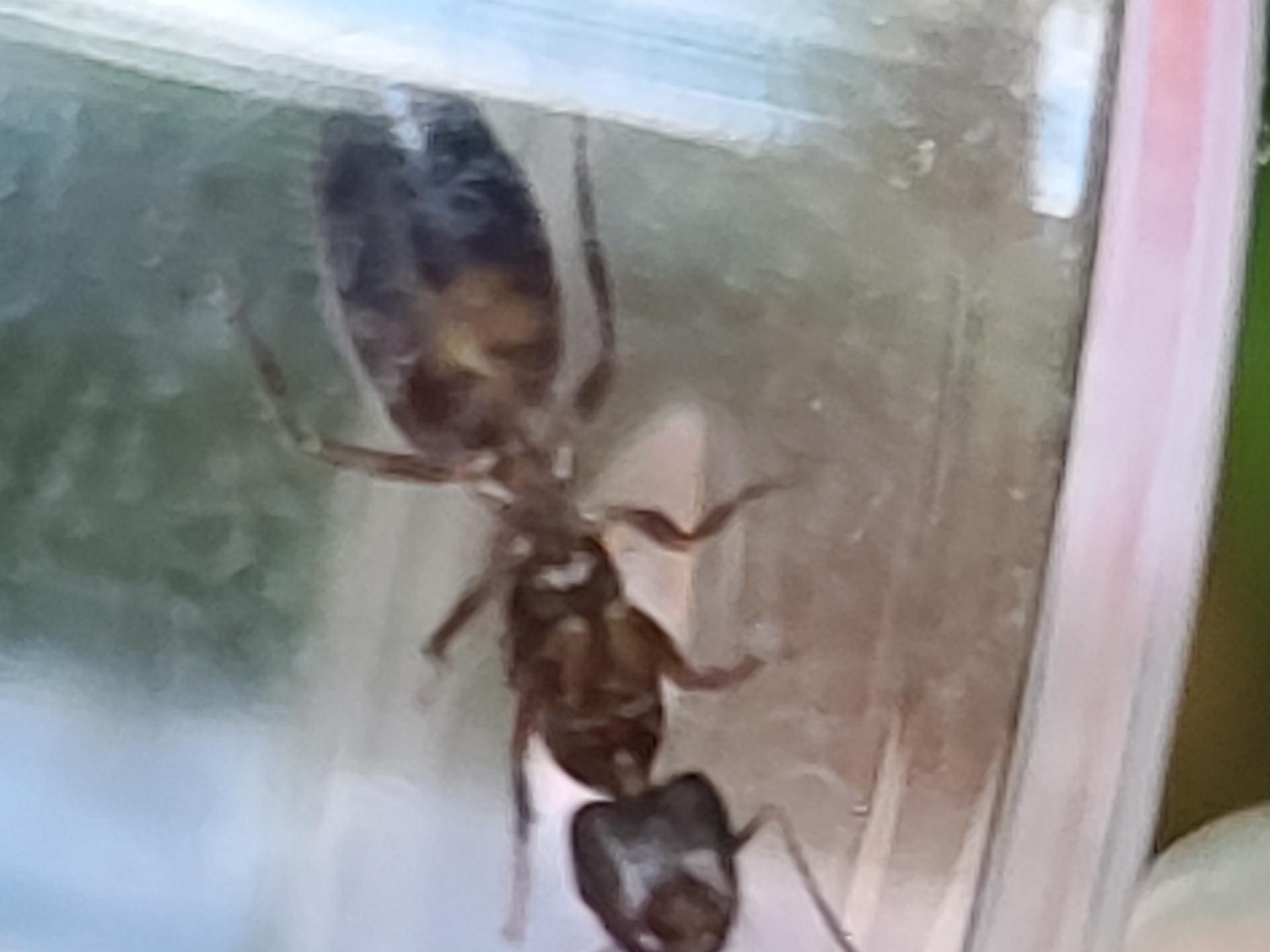- Formiculture.com
- Forums
- Gallery
- Members
- Member Map
- Chat

Found in Virginia, northern .. smaller than the average Camponotus
Started By
Lillyrose
, May 11 2021 5:15 PM
4 replies to this topic
#1
 Offline
-
Posted May 11 2021 - 5:15 PM
Offline
-
Posted May 11 2021 - 5:15 PM
I've been told these are either
Camponotus Caryae or Camponotus nearcticus
Can you help me figure out which?
Sadly I forgot to measure her before putting her away.. but she's rather small. Smaller than castaneus and pennsylvanicus but bigger than formica ...
I found her between two bags of mulch .. slightly moist ...
Camponotus Caryae or Camponotus nearcticus
Can you help me figure out which?
Sadly I forgot to measure her before putting her away.. but she's rather small. Smaller than castaneus and pennsylvanicus but bigger than formica ...
I found her between two bags of mulch .. slightly moist ...
#2
 Offline
-
Posted May 11 2021 - 5:50 PM
Offline
-
Posted May 11 2021 - 5:50 PM
I agree that this is a Myrmentoma group Camponotus queen, but we’re going to need slightly better photos of you want to get much further than that.
#3
 Offline
-
Posted May 11 2021 - 6:05 PM
Offline
-
Posted May 11 2021 - 6:05 PM
I agree that this is a Myrmentoma group Camponotus queen, but we’re going to need slightly better photos of you want to get much further than that.
Ok ...I will try to take better pictures once once has workers...
Is there anything specifically I should take pictures of? Or just more clear?
#4
 Offline
-
Posted May 11 2021 - 6:34 PM
Offline
-
Posted May 11 2021 - 6:34 PM
I agree.I agree that this is a Myrmentoma group Camponotus queen, but we’re going to need slightly better photos of you want to get much further than that.
Sent from my CPH2201 using Tapatalk
Young ant keeper with a decent amount of knowledge on local ant species.
YouTube: https://m.youtube.co...uKsahGliSH7EqOQ (It's pretty dead. Might upload again soon, don't expect my voice to sound the same though.)
Currently kept ant species, favorites have a star in front of their names (NOT in alphabetical order, also may be outdated sometimes): ★ Camponotus irritans inferior, ★ Ooceraea biroi, Pheidole parva, ★ Nylanderia sp., ★ Paraparatrechina tapinomoides, Platythyrea sp., Anochetus sp., Colobopsis sp. (cylindrica group), ★ Crematogaster ferrarii, Polyrhachis (Myrma) cf. pruinosa, Polyrhachis (Cyrtomyrma) laevissima, Tapinoma sp. (formerly Zatapinoma)
Death count: Probably over a hundred individual queens and colonies by now. I cannot recall whatsoever.
YouTube: https://m.youtube.co...uKsahGliSH7EqOQ (It's pretty dead. Might upload again soon, don't expect my voice to sound the same though.)
Currently kept ant species, favorites have a star in front of their names (NOT in alphabetical order, also may be outdated sometimes): ★ Camponotus irritans inferior, ★ Ooceraea biroi, Pheidole parva, ★ Nylanderia sp., ★ Paraparatrechina tapinomoides, Platythyrea sp., Anochetus sp., Colobopsis sp. (cylindrica group), ★ Crematogaster ferrarii, Polyrhachis (Myrma) cf. pruinosa, Polyrhachis (Cyrtomyrma) laevissima, Tapinoma sp. (formerly Zatapinoma)
Death count: Probably over a hundred individual queens and colonies by now. I cannot recall whatsoever.
#5
 Offline
-
Posted May 11 2021 - 8:01 PM
Offline
-
Posted May 11 2021 - 8:01 PM
Yes, this is going to be either C. caryae or C. nearcticus. The only way to definitively differentiate them is by looking around the sides of the head to see if they have erect hair. The sides & front of the head and face of C. caryae are abundant in standing hairs, while in nearcticus you will see little pores that completely lack any noticeable hair at all. You don't necessarily need special camera equipment to see this, but you will need more clear photos than those.
Examples:
Link to Camponotus caryae queen
Link to Camponotus nearcticus queen
- CheetoLord02, Chickalo and yibsi like this
1 user(s) are reading this topic
0 members, 1 guests, 0 anonymous users



















